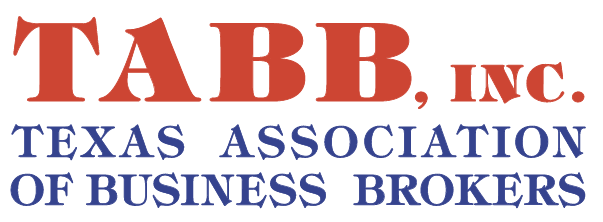Updated July 5, 2022

Here’s how to estimate the value a retail business.
As a business broker and appraiser, I’m often asked about how to value a retail business. The valuation of retail businesses is not an exact science but there are guidelines and rules-of-thumb that can be used for a close approximation of the value of a retail business.
Certain situations require a formal business appraisal including the larger merger-acquisition transactions, SBA loan applications, management performance tracking, estate planning, divorce — or the most dreaded of all — IRS issues. After all, a professional, fully documented appraisal certainly takes the guesswork out of the situation.
However, what we’re talking about here is not a formal appraisal but rather the informal methods of quickly approximating the value of a retail business. The guidelines we’ll quote are averages derived from hundreds of completed transactions reported to regional and national databases.
There are two methods of quickly approximating the value of a business: (1) applying a multiple to the discretionary earnings of the business and (2) applying a percentage to the annual gross revenue of the business.
The most accurate of the two methods seeks to approximate the value of a business by applying a multiple to the company’s discretionary earnings.
What are discretionary earnings? It is NOT the profit or loss that you show Uncle Sam on your tax return. To put it delicately, almost all business owners run some expenses through the business that are not — a’hem – absolutely necessary to the operation of the business.
Discretionary earnings are the total cash that the business generates in a year that is available to the owner after deductions for only the necessary operating expenses. Another way to define discretionary earnings is that it is the “total owner’s benefit” derived from owning the business, regardless of how the owner takes the money out of the business. It is the amount of cash left over after only the necessary expenses that is available for (1) owner’s remuneration, (2) return on investment, and (3) debt service, if any.
Here’s an article explaining the subject in more detail. If you’re not sure of how to calculate discretionary earnings, an accountant or professional business broker can compute it for you.
Practically all retail businesses will appraise for somewhere between 1.5 to 3 times discretionary earnings plus inventory at cost. Exactly where in this range a specific business will fall depends on the size and type of the retail shop, its location, plus its revenue trends.
The second method of estimating the value of a business is less accurate. This method applies a percentage to the operation’s annual gross revenue to approximate value. This method of appraisal assumes the business is earning the average bottom line profit for its peer group. That’s a big assumption!
But making that assumption, we know that almost all retail businesses will appraise for somewhere between 25 and 35 percent of gross annual revenue plus inventory at cost.
As indicated above, inventory for resale should be added at cost to the formula result. If the business owns real estate, the value of the realty should also be added to the guideline result.
However, you as the owner, seller or buyer of the business are the final arbiter of what the business is worth to you. Remember, these guidelines are only averages. And the guidelines certainly don’t take into account any special considerations or any future plans that an owner might have for the business. What a particular business might be worth to you may be more or less than it’s worth to the next person who looks at it.
To subscribe to this blog and get notices of updates, please find the subscribe button top right. We will not spam you!
If we can assist you in valuing, buying or selling a retail business, please don’t hesitate to contact us. Our firm offers written, fully documented valuations on retail businesses.
For further reading, here are additional related articles:
- How to Use Valuation Guidelines to Estimate the Value of a Business
- What are the “Discretionary Earnings” of a Business?
- How to Analyze a Business You’re Considering Buying
- How to Make a Written CONTINGENT Offer to Buy a Business
- Seven Negotiating Rules When Buying or Selling a Business
- How to Conduct Due Diligence When Buying a Business

# # #

















Would this valuation also include the POS System, and the displays? Or would that be added as a seperate line item?
Lynne, thanks for dropping in. The valuation formulas include furniture, fixtures and equipment. Only inventory and real estate (if any) would be added after using the rule-of-thumb formula.
I’m surprised by the 1.5 to 2.2 multiple. You’re basically saying that the buyer will recoup the full investment in 2 years. Isn’t that a bit low? Is this because the type of business you’re talking about requires the owner to manage it continuously and thus a lot of the cash flow actually goes to paying the owner (or a hired manager) a full-time salary instead of repaying the investment?
Pedro, Thanks for stopping by. The multiple of discretionary cash flow as a guideline for valuation of retail establishments has historically been lower than for other types of businesses such as manufacturing. Don’t forget that the value of inventory, at cost, is added to the result.
Adding the inventory at cost makes sense but that’s a totally different transaction. I’m just wondering what justifies the lower multiple. The only thing I can come up with is that you’re not including the salary of the manager as a cost and thus the discretionary cash flow has to pay for the buyer’s time and not just his capital. Does that sound right?
Actually, in calculating discretionary cash flow, the hired manager’s or owner’s salary is included in all categories of businesses, not just retail. So because it’s adusted for universally, this would not account for the lower multiple in retail. One reason that the multiplier is lower in retail is because, generally, there is not as much equipment required in retail as in other types of businesses such as dry cleaning and manufacturing. The multiplier quoted in the article is the averaged result of several thousand retail business sales with the marketplace accounting for the lower cost of equipment required in retail. Hope this helps.
>One reason that the multiplier is lower in retail is because, generally, there is not as much equipment required in retail as in other types of businesses such as dry cleaning and manufacturing.
That makes a lot of sense. Once you’ve taken out the inventory and the location as separate transactions the pure business side of it is much easier to replicate in retail than in other industries.
Pingback: How To Determine The Value Of A Retail Business | Information
I appreciate you explaining the importance of having your business appraised accurately. There is a lot that goes into selling a store or business of any kind. I think it’s wise to consult with professionals through the whole process to make sure you take the right steps to get the full value out of your store.
Bernard, thanks for stopping in. You are right on!
Thank you William,
I wonder how will a prospective buyer or a partner trying to enter a business get an appropriate appraisal if the numbers are arbitrary.
For example, If I want to buy a retail store and the owner says that the profit is around 100K/year but when i add up the numbers it comes up to around 70K. The owner still insists that he makes adjustments and the actual profit is around 100K. How am i suppose to believe his words?
Dave, thanks for dropping in and for your question. Any legitimate valuation of a business will be done from the tax returns. It appears in your case that the seller might be talking about unreported cash. That cannot be used in a valuation. My response to business owners who want to include unreported cash in the valuation is “Look Joe, you’ve already been paid once for that unreported cash by not paying taxes on it, you can’t expect to be paid twice for it.” I hope this helps clarify. Ask your seller for the tax returns. If he refuses, wish him well and walk.
Your blog is so full of great insights. Thank you so much for sharing blog. I have found it extremely helpful.
Thanks for paying us a visit and thanks also for your kind words. Much appreciated.
If the Selling Price = (Discretionary earnings x suitable multiple) + value of Inventory at cost.
I assume then that the SELLER is responsible to settle the amount of Creditors in the business relating to Inventory purchases?…..Correct?
Retail businesses tend to want to match Inventory holdings value at cost = roughly what the business owes its Trade creditors = say 4 – 6 weeks worth of inventories/stock turn.
Therefore: Nett cash in hands to the Seller = (Discretionary earnings x suitable multiple) + value of Inventory at cost – amount of Credtors.
Correct?
Roy, thanks for stopping by. In a typical asset sale as opposed to a corporate stock or LLC membership sale, the seller delivers all the business assets to the buyer free and clear of all encumbrances. In other words, if there is any debt at time of closing, the debts are paid out of the proceeds of the sale. Hope this helps. -William